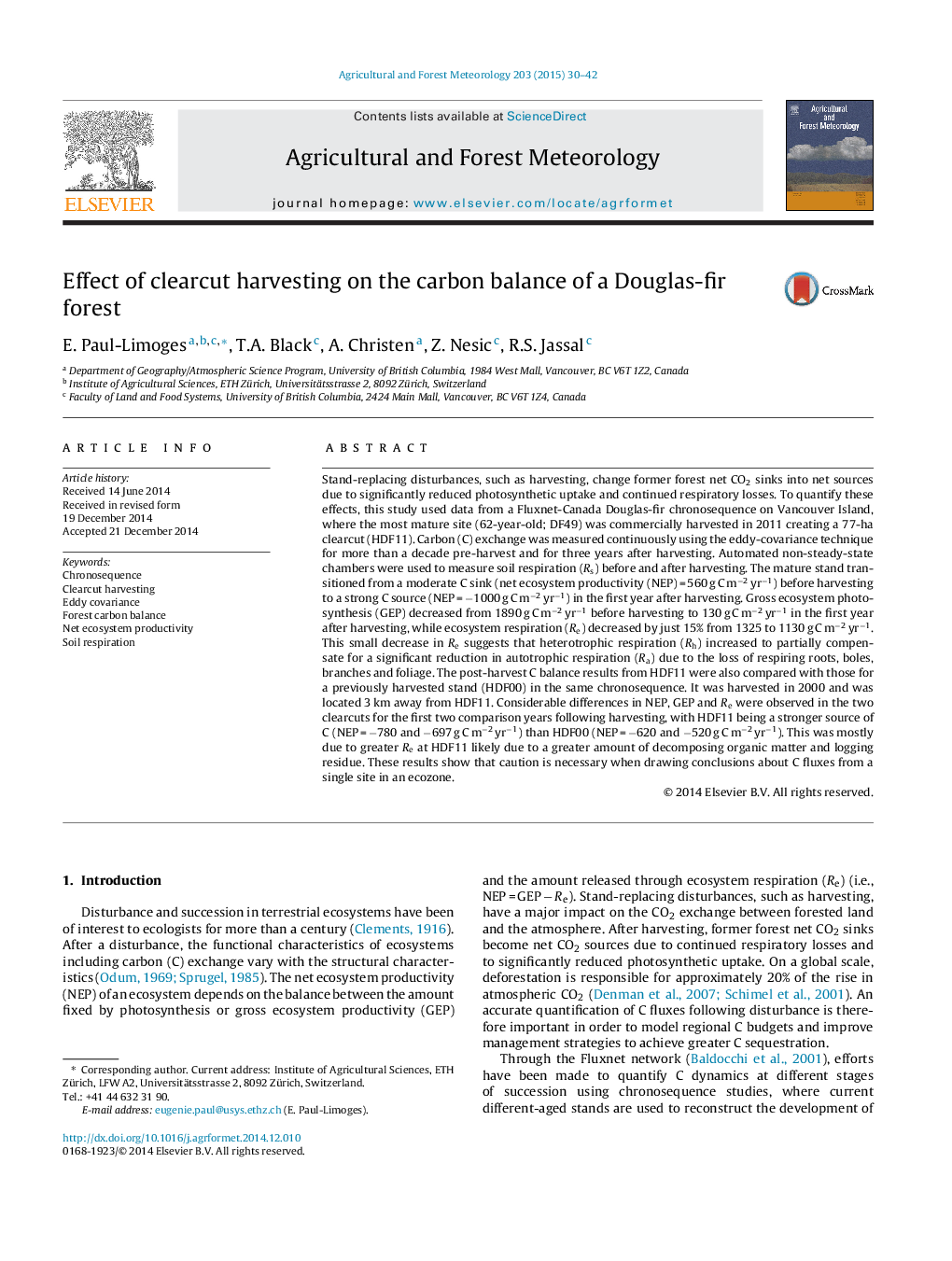| کد مقاله | کد نشریه | سال انتشار | مقاله انگلیسی | نسخه تمام متن |
|---|---|---|---|---|
| 6537348 | 158331 | 2015 | 13 صفحه PDF | دانلود رایگان |
عنوان انگلیسی مقاله ISI
Effect of clearcut harvesting on the carbon balance of a Douglas-fir forest
ترجمه فارسی عنوان
اثر برداشت برش بر روی توازن کربن یک جنگل داگلاس-پیگ
دانلود مقاله + سفارش ترجمه
دانلود مقاله ISI انگلیسی
رایگان برای ایرانیان
کلمات کلیدی
موضوعات مرتبط
مهندسی و علوم پایه
علوم زمین و سیارات
علم هواشناسی
چکیده انگلیسی
Stand-replacing disturbances, such as harvesting, change former forest net CO2 sinks into net sources due to significantly reduced photosynthetic uptake and continued respiratory losses. To quantify these effects, this study used data from a Fluxnet-Canada Douglas-fir chronosequence on Vancouver Island, where the most mature site (62-year-old; DF49) was commercially harvested in 2011 creating a 77-ha clearcut (HDF11). Carbon (C) exchange was measured continuously using the eddy-covariance technique for more than a decade pre-harvest and for three years after harvesting. Automated non-steady-state chambers were used to measure soil respiration (Rs) before and after harvesting. The mature stand transitioned from a moderate C sink (net ecosystem productivity (NEP) = 560 g C mâ2 yrâ1) before harvesting to a strong C source (NEP = â1000 g C mâ2 yrâ1) in the first year after harvesting. Gross ecosystem photosynthesis (GEP) decreased from 1890 g C mâ2 yrâ1 before harvesting to 130 g C mâ2 yrâ1 in the first year after harvesting, while ecosystem respiration (Re) decreased by just 15% from 1325 to 1130 g C mâ2 yrâ1. This small decrease in Re suggests that heterotrophic respiration (Rh) increased to partially compensate for a significant reduction in autotrophic respiration (Ra) due to the loss of respiring roots, boles, branches and foliage. The post-harvest C balance results from HDF11 were also compared with those for a previously harvested stand (HDF00) in the same chronosequence. It was harvested in 2000 and was located 3 km away from HDF11. Considerable differences in NEP, GEP and Re were observed in the two clearcuts for the first two comparison years following harvesting, with HDF11 being a stronger source of C (NEP = â780 and â697 g C mâ2 yrâ1) than HDF00 (NEP = â620 and â520 g C mâ2 yrâ1). This was mostly due to greater Re at HDF11 likely due to a greater amount of decomposing organic matter and logging residue. These results show that caution is necessary when drawing conclusions about C fluxes from a single site in an ecozone.
ناشر
Database: Elsevier - ScienceDirect (ساینس دایرکت)
Journal: Agricultural and Forest Meteorology - Volume 203, 15 April 2015, Pages 30-42
Journal: Agricultural and Forest Meteorology - Volume 203, 15 April 2015, Pages 30-42
نویسندگان
E. Paul-Limoges, T.A. Black, A. Christen, Z. Nesic, R.S. Jassal,
